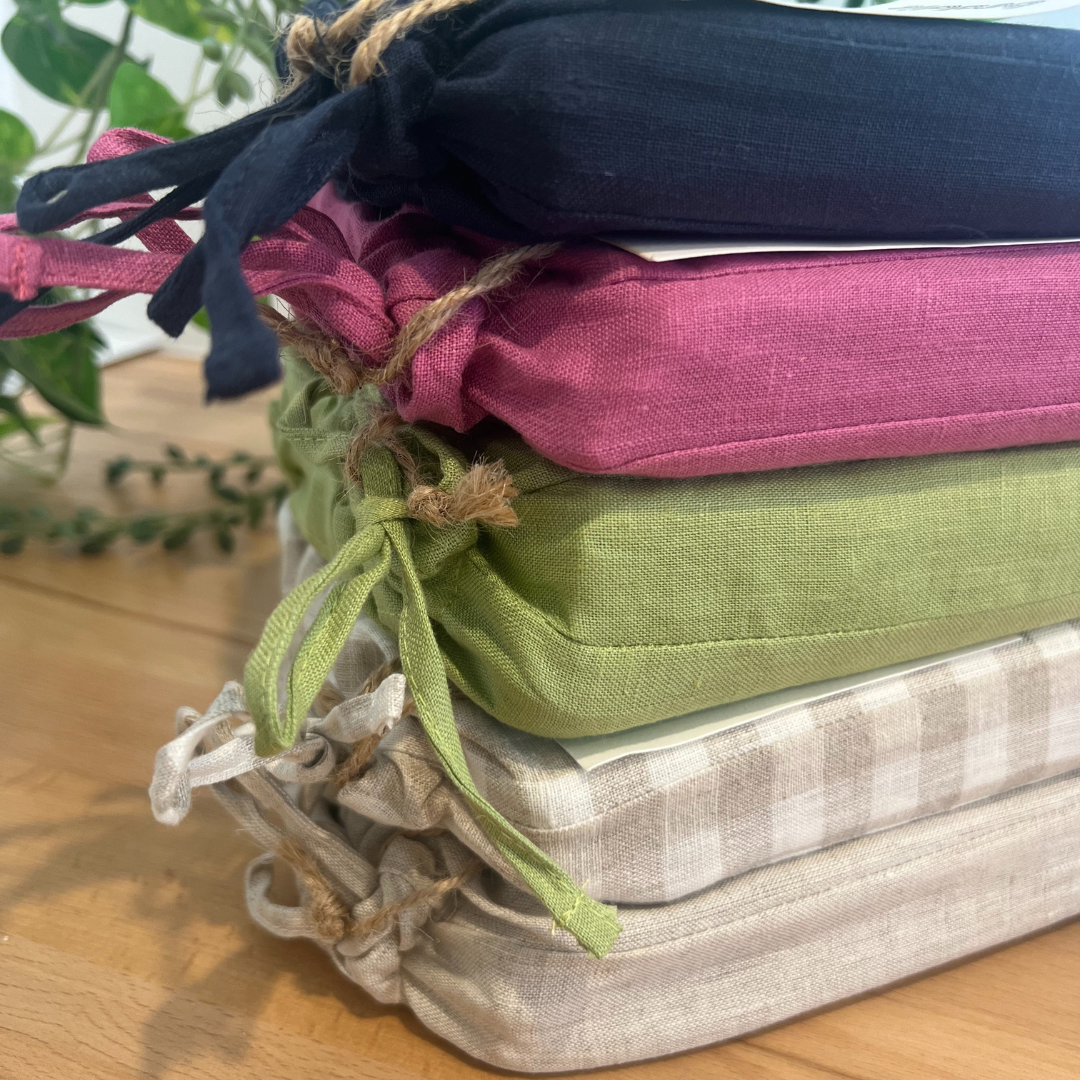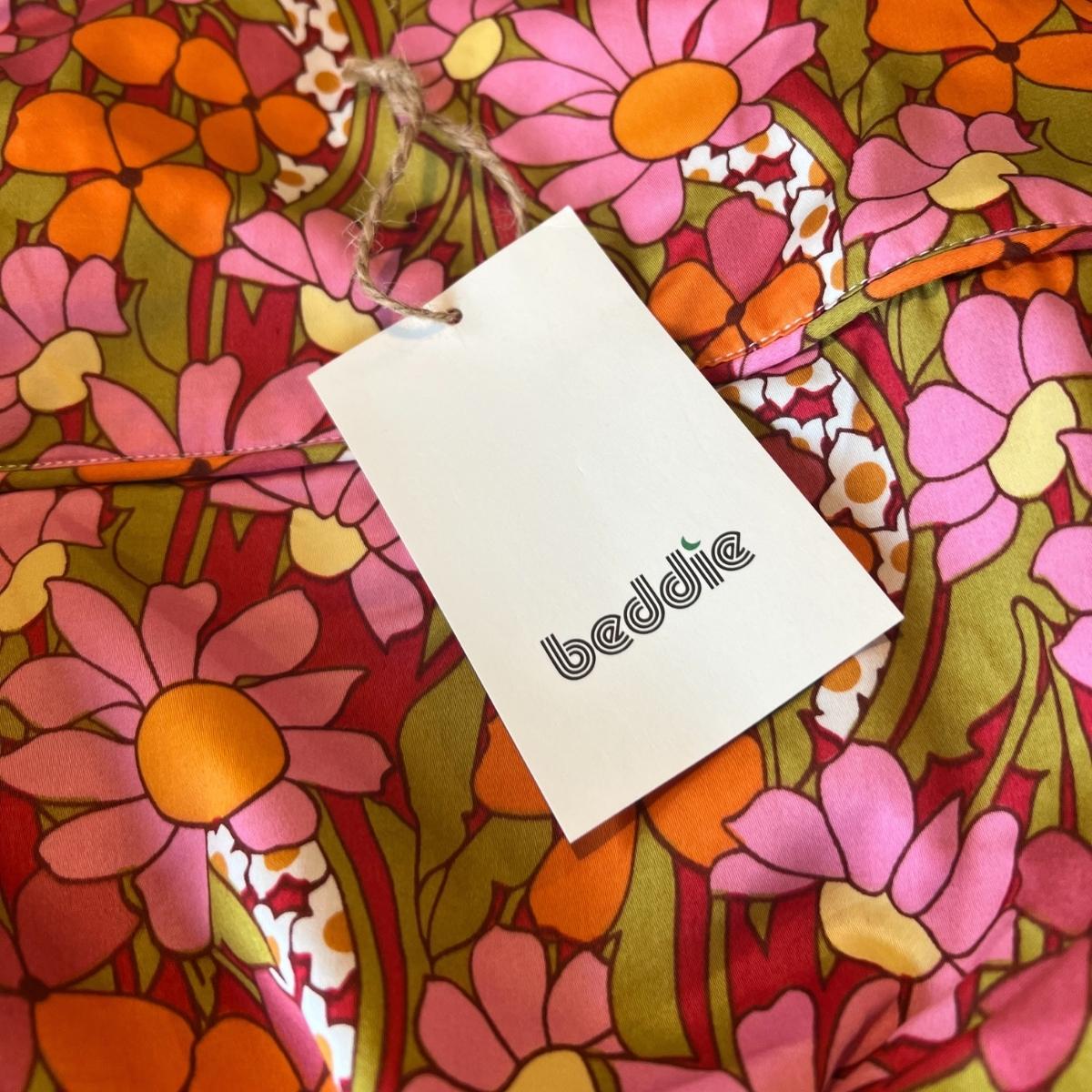Lilac Cotton Quilt Cover with Hidden Zipper
$199.95
Tax included.
1 review
Free shipping over $350 - Flat rate of only $15.00 for orders under $350 (within Australia)
Pillowcases are available HERE.
Our finely crafted covers come with piping, lush long-staple woven cotton, and YKK invisible zips. No fussing with buttons or having your quilt slip and slide.
YKK zippers are the awesome-est, designed to never, ever snag or break.
Plus inner corner ties to keep your quilt snug and secure - genius.
Colours may vary slightly on different monitors.
Sizing
Sizing
Quilt Cover
Double : L 210cm x W 180cm
Queen: L 210cm x W 210cm
King: L 245cm x W 210cm
Super King: L270 x W 240cm
Fitted Sheet
Cot: L137 x W 77cm x D 19cm
Single: L 193cm x W 91cm x 40cm
King Single: L203cm x W107 x D40cm
Double: L 195cm x W 137cm x D 40cm
Queen: L 203cm x W 152cm x D 50cm
King: L 203cm x W 180cm x D 50cm
Super King: L203 x W 203cm x D50cm
Flat Sheet
Cot: L 160cm x W 138cm
Single: L 260 x W 195cm
King Single: L 270 x W 200cm
Double: L 260cm x W 240cm
Queen: L 265cm x W 245cm
King: L 265cm x W 275cm
Super King: L 320 x W 290cm
Pillowcases
Standard: L 74cm x W 49cm x 22cm Envelope
King: L 91cm x W 51cm x 22cm Envelope
Euro Pillowcases : 65cm x 65cm
Care Instructions
Care Instructions
To ensure a clean and healthy sleeping environment, washing your bed linen regularly is essential. Pure cotton sateen sheets are no exception. We recommend washing your sheets once a week. However, if you have asthma or sensitive skin, you may need to wash your bedding more frequently, making sure to use gentle washing methods. If you've been unwell, it's crucial to wash your sheets as soon as you feel better.
Tips on Washing your Bedding
To ensure that your bedding remains soft and comfortable over time, it's best to wash them before making your bed. However, when washing your bedding, avoid overfilling the washer with other bedding items or clothing, particularly those with with zippers and buttons. This can cause entanglement with your sheets, resulting in a less effective wash cycle and potential fibre damage.
Temperature and Settings for Sateen Bedding
Wondering whether to wash sateen sheets in hot or cold water? It's best to use cool water for sateen bedding. Hot water can cause thread damage or shrinkage, while cold water may not effectively clean the fabric. For washing machine settings, try using the delicate or normal cycle with cool water and low spin. Some machines also have a specific bedding setting.
Detergent and Bleach
When washing sateen sheets, be sure to use a mild detergent free of bleaching agents. Avoid using bleach on your sateen sheets, even if they're white. Sateen is made from soft Egyptian cotton, so fabric softener is unnecessary. But if you can't live without the fresh smell of a Fabric Softener, we have a really easy DIY Recipe here. Better still, using wool dryer balls with a few drops of your favourite essential oils, this will keep your bedding smelling luxe, reduce static and cut drying time in half. Look out for Beddie 100% New Zealand Wool Dryer Balls coming soon!
Removing Stains From Sateen Sheets
Accidents happen, and when they do, be prepared to give your bedding some extra attention. Immediately apply a non-bleach stain remover like distilled white vinegar, talc or cornstarch, or baking soda (see info below) directly on the stained area. Afterward, wash your sheets as you normally would. For bigger stains or those that have already dried, soak the bedding for a few hours in cool water with some mild detergent before running it through a normal wash cycle. The soaking process loosens the stains while the detergent removes them. Don't waste money on expensive products to treat your sateen bed sheets, and help the planet by using gentle, non-toxic boosters. White vinegar is an excellent alternative known for its odor and stain-removing properties. There are a huge amount of great things you can clean with distilled white vinegar - take a look here. You can even use it on delicate fabrics like linen and silk. Soak your sateen sheets in cool water mixed with a third of a cup of white vinegar. Alternatively, add the vinegar directly to the fabric softener tray of your washing machine. Another pantry staple that works wonders on stained bedsheets is baking soda. It boosts your detergent's effectiveness and acts as a natural bleacher without damaging the cotton fibers of the fabric. Simply place half a cup of baking soda directly in the drum and use your regular mild detergent.
The Miraculous Stain-Removing Properties of Distilled White Vinegar
Are you tired of using harsh chemicals to remove stains from your clothes? Look no further than distilled white vinegar, a natural and effective solution. By soaking your clothes for three minutes in white vinegar before washing them, you'll be able to enjoy soft, fresh-smelling clothes without the need for artificial chemicals or fabric softeners. In addition to being gentle on fabrics, white vinegar can also tackle tough stains like underarm perspiration, yellow marks, and odours. It can even keep your washing machine smelling fresh and clean by using it instead of detergent-laden water for a simple rinse. Whether you're dealing with grease stains or coffee spills, distilled white vinegar is a go-to solution for all your laundry needs.
Homemade Laundry Stain Removal with Baking Soda
Baking soda is another versatile and natural ingredient that can be used in many ways to freshen up laundry. When added to your wash cycle, it can help remove stains and leave your clothes feeling clean and fresh. Simply add a cup of baking soda to your laundry detergent and let it dissolve before starting your machine.
Baking soda also has natural antifungal properties, making it ideal for removing mildew and mould in the laundry room. Apply baking soda to any surface with stains or odours, let it sit for a few minutes, and then wipe it off.
Removing Oil Stains with Talc or Cornstarch
Oil stains can be a real pain to remove, but baby powder and cornstarch are here to help. If you catch the stain early, removing it is simple. Let the powder sit on the stain for at least 10 minutes to absorb the oil before rinsing it off according to the care label instructions.
Tips for Drying your Bedding
Line drying is always the preferred method of drying, but not always achievable, so here are a few tips for using a clothes dryer. Immediately transfer your sheets to the dryer after washing to prevent wrinkles or mould. Avoid drying them at high temperatures, which can damage the cotton fibres and cause shrinking, pilling, or colour fading. Tumble dry your bedding at a low temperature for optimal results. Use wool dryer balls instead of synthetic dryer sheets to avoid exposing your sheets and yourself to chemicals and synthetic fragrances. Wool dryer balls are also a more sustainable option that can cut drying time in half. Line drying is always the best choice if you can, it's a natural and cost-effective way to extend the lifespan of your sateen bedding while also enjoying the fresh outdoor scent.
Tips for Maintaining Sateen Bedding After Washing
Sateen sheets are known for their wrinkle-resistant properties, thanks to their unique weaving pattern. This produces a thicker fabric that drapes beautifully and is less prone to creasing. Here are some tips to keep them looking great after washing: Ironing: The most effective way to iron sateen bedding is to take it out of the dryer while still slightly damp. Then, iron the bedsheets on the reverse side, on a low heat.
Storage: Proper storage is essential to protect sateen bed linens from mould, mildew, and discoloration. After drying and folding, store them in a cool, dry place away from the sun. Good ventilation is crucial.
You may also like
Subscribe to our newsletter
Promotions, new products and sales. Directly to your inbox.














